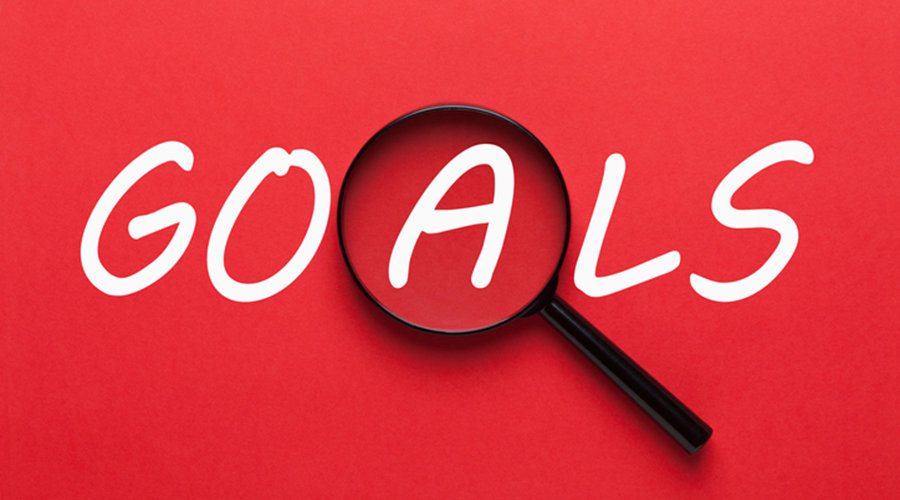
The importance of clearly stated goals for long-term success
“Would you tell me, please, which way I ought to go from here?”
“That depends a good deal on where you want to get to,” said the Cat.
“I don’t much care where—” said Alice.
“Then it doesn’t matter which way you go,” said the Cat.
“—so long as I get somewhere,” Alice added as an explanation.
“Oh, you’re sure to do that,” said the Cat, “if you only walk long enough.”
This classic passage from Alice in Wonderland, illustrates the importance of goal setting in our lives. Without clearly stated goals we are unlikely to wander into happiness or success. Think of goal setting as your north star. Something that will guide your actions in even the most difficult times. Knowing that a journey will be tough and undoubtedly test our resolve, shouldn’t we make sure that the destination is great enough to sustain us?
The theory of goal setting has been extensively researched. Mitchell and Daniels argue that goal setting “is quite easily the single most dominant theory in the field with over a thousand articles and reviews published on the topic in a little over 30 years”. The term “goal” is a common concept that encompasses “intention, task, deadline, purpose, aim, end and objective” and is deemed as a “regulator of action” . Significantly, according to Hale and Whitlam (1998, p.1), “whether they are known as goals, targets or objectives, organizations are constantly seeking ways to achieve them because “target setting is seen as a means of helping all employees to pull in the same direction with a view to gaining competitive advantage.” Locke and Latham (1990, p. 45) reinforced the argument that “There is strong reason to conclude that goal setting works at the group and organizational (or unit) level as well as at the individual level.”
So how do we set a goal that will inspire us to become our best selves, or grow our businesses into the life changing vehicle we know it could be?
Go Big or Go Home: The Big Hairy Audacious Goal (BHAG)
A BHAG is a strategic business (or personal) statement similar to a vision statement which is created to focus an organization on a single medium-to long-term organization-wide goal which is audacious, likely to be externally questionable, but not internally regarded as impossible.
Jim Collins and Jerry Porras coined the term “Big Hairy Audacious Goal” in their 1994 book Built to Last: Successful Habits of Visionary Companies. A BHAG encourages organizations to define visionary goals that are more strategic and emotionally compelling. Traditionally organizations and managers set goals that describe what they hope to accomplish over the coming days, months or years. These goals help align employees to work together more effectively towards common goals but often these goals are very tactical, such as “achieve 10% revenue growth in the next 3 months”. In contrast, Collins and Porras define a BHAG as “an audacious 10-to-30-year goal to progress towards an envisioned future.”
A BHAG, on the other hand is meant to be a 10+ year visionary goal that describes your envisioned future and is one of the successful habits of visionary companies. It should stretch you and guide you while unifying on a focal point of effort to help determine what to do and not to do as you forge ahead to accomplish your goals. It should:
- Be specific,
- Be easy to measure
- Have a time-based component
- Connect to the heart
- Inspire everyone to work hard to reach it.
A true BHAG is clear and compelling, serves as a unifying focal point of effort, and acts as a clear catalyst for spirit. It has a clear finish line, so the organization can know when it has achieved the goal.
While we all may not be involved in this type of planning for a full company, we can apply this to our professional and personal lives and goals.
Six tips for building a great personal BHAG:
- A good BHAG is set with understanding, not bravado, is bold, but not unrealistic.
- It fits squarely in the three circles of (a) what you are deeply passionate about (including your own core values and purpose), (b) what drives your economic logic, and (c) what differentiates you (what you personally can be the best in the world at).
- It should have a long period to achieve—10 to 30 years.
- It is clear, compelling, and easy to grasp.
- It helps define your personal hedgehog (hedgehog concept) or playing towards your strength.
- It directly reflects your core values and core purpose.
Here are 4 components for a great personal BHAG:
- Choose an arrival or completion date.
- Develop a quantitative goal to achieve.
- Make it qualitative in a way that connects to the heart and inspires you to achieve it while connecting to your core values and purpose.
- Share with others around you to hold yourself accountable.
While researching this topic I also found this helpful tip:
How do you know you’ve found your personal BHAG?
I knew I’d found mind when:
- It made those who heard my goal for the first time either give me the look of pity or utter surprise. If it didn’t, it wouldn’t have been BIG enough.
- It couldn’t be done in a vacuum; but rather required a LOT of faith, help, teamwork, guidance, research, caffeine and patience. If it didn’t, it wouldn’t be HAIRY enough.
- I had no idea HOW to achieve the goal. If I did, it wouldn’t be AUDACIOUS enough.
- It would take me about +/- 19 years to reach my goal. If it didn’t take at least 10 years, it wouldn’t be a visionary BHAG. If you feel you have a BHAG that you can accomplish in 5 years, go for it – those goals are important, too! But in order to be a visionary BHAG, you have to go big or go home!
- It takes you out of your comfort zone, if it is 100% in your comfort zone, it isn’t a true BHAG!
- It needs to be a focal point of effort to help you make decisions and chip away at the goal.
A personal case study…my own BHAG:
We will create a PT clinic and fitness facility that delivers world class care to the people of Wilkes Barre, serving over 250 fitness members and conducting over 600 patient visits per week by January 1st, 2025.
We are 7 years into our business, and we are over 70% percent of the way there. Each day we reflect on what is yet to be done to get us there, but it also sustains us to think about how far we’ve come. We started with one employee seeing under 20 patients per week and coaching 12 fitness clients just seven years ago. Setting a goal this high seemed crazy at the time, but we felt if we stayed focused on it, and constantly asked ourselves how we could make improvements to get there, we would slowly make it a reality. We can’t wait to see what we can achieve in the next 5 years.
Sit down and write your own 10-30 year BHAG right now. The time is going to pass anyway. You might as well pick a destination and start your journey!
References:
1) Latham, GP &Pinder, CC 2005, “Work motivation theory and research at the dawn of the twenty-first century”, Annual Review of Psychology, Vol. 56, pp. 485-516.
2) Locke, EA & Latham, GP 1990, A theory of goal setting & task performance, Prentice Hall, Inc, USA
3) Hale, R & Whitlam, P 1998, Target setting and goal achievement: A practical guide for managers, 2nd ed, Kogan Page, London, UK
4) Locke, EA & Latham, GP 2013, “New developments in goal setting and task performance”, Walsworth Publishing Company, USA
5) Collins, Jim & Porras, Jerry I. (1994). Built To Last: Successful Habits of Visionary Companies. HarperBusiness. p. 113. ISBN 0-060-56610-8.
6) Collins, Jim & Porras, Jerry I. (September 1996). “Building Your Company’s Vision”. Harvard Business Review. 74 (5): 65–77.
7) https://www.rhythmsystems.com/blog/do-you-have-a-personal-bhag
8) https://www.rhythmsystems.com/blog/why-having-a-personal-bhag-matters






